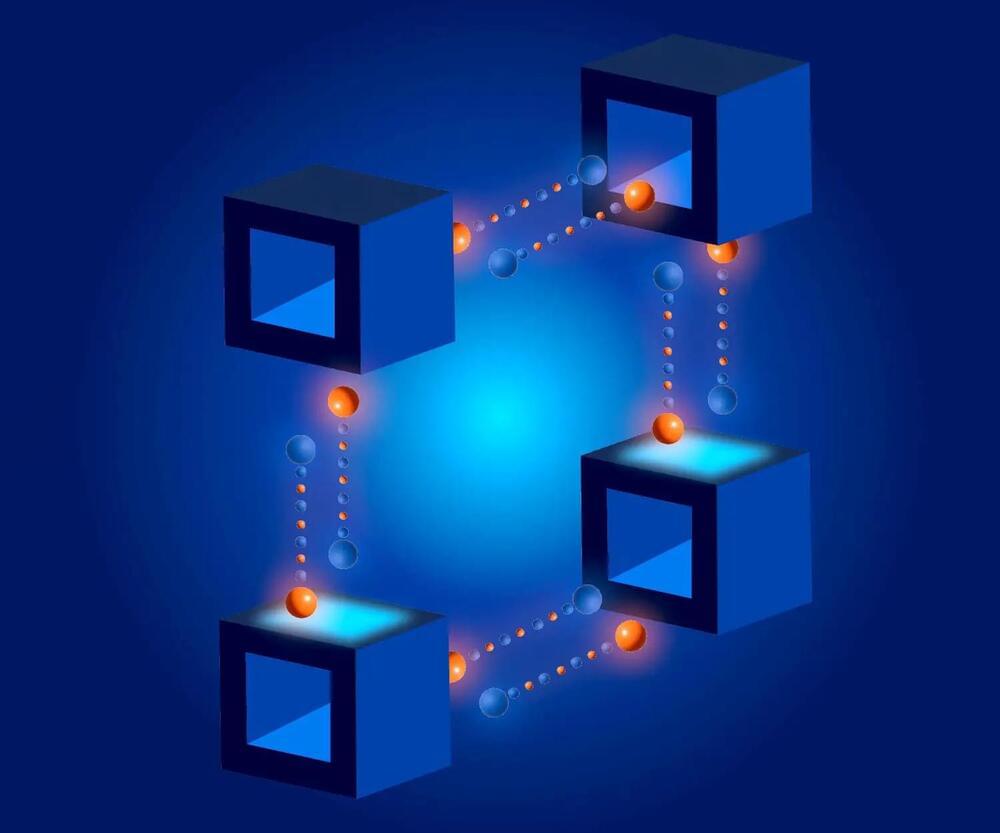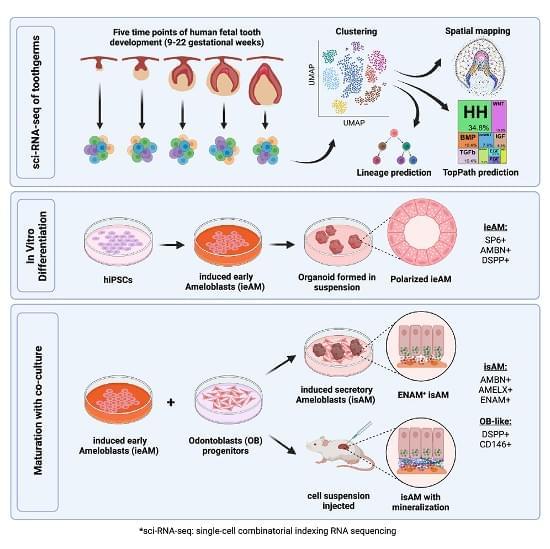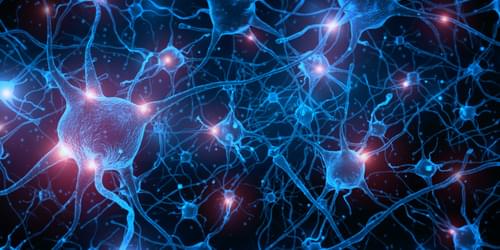The Tune Therapeutics results are the first published data showing successful CRISPR epigenome editing in non-human primates.



Researchers have developed a theoretical framework that provides deeper insights into quantum nonlocality, a vital property for quantum networks to outperform classical technology. Their study unified previous nonlocality research and showed that nonlocality is achievable only through a restricted set of quantum operations. This framework could aid in evaluating the quality of quantum networks and broaden our understanding of nonlocality.
A new theoretical study has been conducted, providing a framework for understanding nonlocality. This is a crucial characteristic that quantum networks must exhibit to perform tasks unachievable by traditional communications technology. The researchers involved clarified the concept of nonlocality, outlining the conditions necessary for establishing systems with potent quantum correlations.
A great video if you have 8 min to spare.
Have you ever wanted to own a flying car?
Well, the future might just be bright for you as the latest developments out of US-based Jetoptera are bringing us one step closer to your sci-fi fantasy being a reality.
Jetoptera and their extended line of fluidic propulsion-powered aircraft are revolutionizing the world of bladeless aviation options. Their technology is decades ahead of our current helicopter and aircraft designs, and many are buzzing about the opportunity to use this propulsion system in everything from drones, military spacecraft, and even personal transportation.
Jetoptera still has a long way to go before they are ready for consumers, but that doesn’t stop us from taking a closer look and dreaming of the future of flight and travel.
Consider Subscribing for more awesome new tech videos.

One way to put dentists out of the drilling and filling business is to find a way to re-establish and stimulate something our bodies do when our teeth first form. Stem cell researchers at the University of Washington in Seattle may have figured out a potential treatment to repair damaged teeth and regenerate those we lose.
Hai Zhang, a professor of restorative dentistry at the University, along with several colleagues has found a way to generate ameloblasts. What are they? Ameloblasts are one of two cells that exist in human embryos responsible for the formation of our teeth. The other cells are called odontoblasts—the former secrete enamel, the latter dentin.
The process of tooth development is called odontogenesis. The two cells mentioned above are critical to tooth formation. Enamel keeps our teeth surfaces hard and strong throughout our lifetimes. Mineralization of teeth begins early in embryonic development. Dentin precedes enamel production, both critical to giving us a healthy set of choppers.
Join us on Patreon! https://www.patreon.com/MichaelLustgartenPhD
Discount Links:
At-Home Metabolomics: https://www.iollo.com?ref=michael-lustgarten.
Use Code: CONQUERAGING At Checkout.
NAD+ Quantification: https://www.jinfiniti.com/intracellular-nad-test/
Use Code: ConquerAging At Checkout.
Epigenetic Testing: https://trudiagnostic.com/?irclickid=U-s3Ii2r7xyIU-LSYLyQdQ6…M0&irgwc=1
Use Code: CONQUERAGING
Oral Microbiome: https://www.bristlehealth.com/?ref=michaellustgarten.
Enter Code: ConquerAging.
At-Home Blood Testing (SiPhox Health): https://getquantify.io/mlustgarten.
While the current Oppenheimer blockbuster film focused on the destructive power of nuclear weapons, more peaceful uses of atomic propulsion for space exploration are now gaining once again momentum. ROB COPPINGER reports.
Nuclear fission and fusion power propulsion are under investigation in Europe and the US with an in-space engine demonstration planned by 2027 — with the news last month that Lockheed Martin had been selected to develop a nuclear thermal propulsion system for DARPA’s DRACO programme (see below).
Nuclear propulsion is attractive as it is far more efficient and powerful than conventional chemical rocket engines – with nuclear thermal propulsion (NTP) having twice the propellant efficiency of chemical rockets. SpaceX plans to use its Starship Heavy rocket, propelled by liquid oxygen and methane, to take Elon Musk’s colonists to Mars. NASA’s decades of research have also concluded that NTP is the best choice for crewed missions to the red planet with its Human Exploration of Mars Design Reference Mission 5.0, published in 2009, making clear NTP’s advantages. With NTP, a propellant, liquid hydrogen, is propelled by the heat from a nuclear reactor. It offers a high thrust-to-weight ratio around 10,000 times greater than nuclear electric propulsion (NEP) and two-to-five times greater specific impulse than in-space chemical propulsion.


In the ’80s, the spy agency investigated the “Gateway Experience” technique to alter consciousness and ultimately escape spacetime. Here is everything you need to know.
She turned to me the other morning and said, “You heard of The Gateway?” It didn’t register in the moment. She continued, “It’s blowing up on TikTok.” Later on, she elaborated: It was not in fact the ill-fated ’90s computer hardware company folks were freaking out about. No, they’ve gone further back in time, to find a true treasure of functional media.
The intrigue revolves around a classified 1983 CIA report on a technique called the Gateway Experience, which is a training system designed to focus brainwave output to alter consciousness and ultimately escape the restrictions of time and space. The CIA was interested in all sorts of psychic research at the time, including the theory and applications of remote viewing, which is when someone views real events with only the power of their mind. The documents have since been declassified and are available to view.
YouTuber Shane Wighton from the channel “Stuff Made Here” has created a terrifying bow that aims itself and never misses.
The bow is so sophisticated that Wighton doesn’t even have to look at the target — he demonstrates with an apple perched on top of a Styrofoam apple — to hit a bullseye.
Well, that’s terrifying.

Ticking clocks and flashing fireflies that start out of sync will fall into sync, a tendency that has been observed for centuries. A discovery two decades ago therefore came as a surprise: the dynamics of identical coupled oscillators can also be asynchronous. The ability to fall in and out of sync, a behavior dubbed a chimera state, is generic to identical coupled oscillators and requires only that the coupling is nonlocal. Now Yasuhiro Yamada and Kensuke Inaba of NTT Basic Research Laboratories in Japan show that this behavior can be analyzed using a lattice model (the XY model) developed to understand antiferromagnetism [1]. Besides a pleasing correspondence, Yamada and Inaba say that their finding offers a path to study the partial synchronization of neurons that underlie brain function and dysfunction.
The chimera states of a system are typically analyzed by looking at how the relative phases of the coupled oscillators fall in and out of sync. But that approach struggles to describe the system when the system contains distantly separated pockets of synchrony or when there are nontrivial configurations of the oscillators, such as twisted or spiral waves. It also requires knowledge of the network’s structure and the oscillators’ equations of motion.
In seeking an alternative approach, Yamada and Inaba turned to a two-dimensional lattice model used to tackle phase transitions in 2D condensed-matter systems. A crucial ingredient in that model is a topological defect called a vortex. Yamada and Inaba found that they could embody the asynchronous dynamics of pairs of oscillators by formulating the problem in terms of an analogous quantity that they call pseudovorticity, whose absence indicates synchrony and whose presence indicates asynchrony. Their calculations show that their pseudo-vorticity-containing lattice model can successfully recover the chimera state behavior of a simulated neural network made up of 200 model oscillators of a type commonly used to study brain activity.